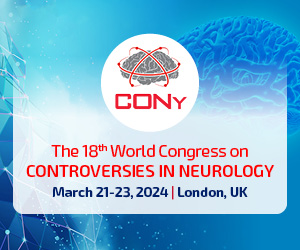Trigeminal neuralgia
Jan Kochanowski
 Affiliation and address for correspondence
Affiliation and address for correspondenceTrigeminal neuralgia is one of the most severe facial pains. Although it has been broadly described by many researchers, it is referred to as Fothergill’s disease to commemorate the researcher who gave the first full and accurate description of trigeminal neuralgia in 1773. Trigeminal neuralgia incidence ranges from 2 to 5 cases per 100,000 people, with women being affected more often than men. The trigeminal nerve has a sensory and motor function, and along with the glossopharyngeal nerve, the vagus nerve, the suboccipital nerve, the greater and lesser occipital nerves and the great auricular nerve innervate the skin of the head. Fibres that convey pain stimuli through the trigeminal ganglion terminate in the spinal nucleus, from where, passing through the nuclei of the thalamus, they reach the sensory cortex, the limbic system and the insular cortex. The reasons behind painful sensation in neuralgia may be the damage of the thick Aβ nerve fibres and the appearance of focuses of ectopic excitation which is then transferred to the damaged structural thin Aδ and C nerve fibres in neural connections referred to as ephapses. There are two types of trigeminal neuralgia: classic and symptomatic. Both types are characterised by a sudden, electric shock-like pain that lasts from a couple of seconds to two minutes. More often than not, the pain affects the area innervated by the second and the third branch of the trigeminal nerve, namely the maxillary and the mandibular nerve. Trigger zones are characteristic for this condition, and – when irritated by non-pain stimuli – they cause an attack of neuralgia. The management of trigeminal neuralgia involves surgical and conservative treatment. The golden standard for the conservative treatment is to use carbamazepine or oxcarbazepine. Should the aforementioned treatment fail, baclofen, lamotrigine or other anticonvulsant drug used in the treatment of epilepsy may be introduced. The following are the most frequently used surgical methods of treatment: decompression of the neurovascular conflict, the use of trigeminal ganglion balloon compression, the use of percutaneous glycerol block of the Gasserian ganglion, cutting postganglionic nerve fibres with radiofrequency and stereotactic radiosurgery (gamma knife).








